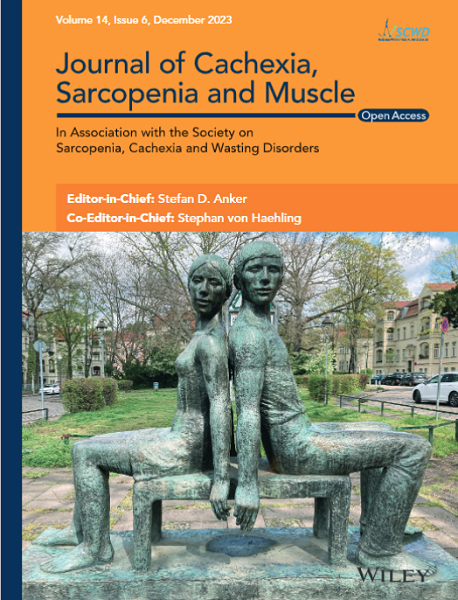To explore the association between cachexia, as defined by different diagnostic criteria, and the risk of mortality in individuals with cancer. We also examined which diagnostic criteria are more feasible and appropriate for cancer-associated cachexia in clinical practice.
A multicentre cohort study was conducted, which involved 5769 participants with cancer. The diagnosis of cachexia was made by applying the initial Fearon criteria (with the appendicular skeletal muscle mass index [ASMI]) and six modified criteria: (1) evaluating the muscle mass through the mid-upper-arm muscle area (MAMA), (2) fat-free mass index (FFMI), (3) calf circumference (CC), (4) hand grip strength (HGS), (5) neutrophil-to-lymphocyte ratio (NLR) and (6) omission of reduced muscle mass. The correlations between cancer cachexia diagnosed by different definitions and survival were assessed using Kaplan–Meier analyses and multivariable-adjusted Cox models. The sensitivity, specificity, positive likelihood ratios, negative likelihood ratios, AUC value, Youden index and weighted kappa coefficient were calculated for each set of criteria.
The final analysis included 5110 patients diagnosed with 15 different types of cancer, with a median age of 56. Out of these, 2490 (48.7%) were male. The prevalence of cancer cachexia based on the Fearon criteria was 26.5%, ranging from 21.8% to 32.2% with the six modified criteria. Following adjustment for age, sex, clinical stage and cancer site, cachexia defined by Fearon criteria was associated with a noteworthy increase in mortality (HR, 1.275; 95% CI, 1.136–1.430; p < 0.001), ranging from 1.237 (95% CI, 1.106–1.383; p < 0.001) to 1.382 (95% CI, 1.226–1.557; p < 0.001) by the six modified criteria. All six modified criteria presented adequate performance indicators (all p < 0.001), with sensitivity ranging from 82.4% (95% CI, 80.2%–84.3%) to 90.7% (95% CI, 89.0%–92.2%), specificity ranging from 86.9% (95% CI, 85.7%–87.9%) to 100.0% (95% CI, 99.9%–100.0%) and AUC ranging from 0.860 (95% CI, 0.850–0.869) to 0.932 (95% CI, 0.925–0.939). The modified criteria also showed strong (Fearon criteria with NLR: κ = 0.673, 95% CI, 0.651–0.695) to almost perfect (Fearon criteria without reduced muscle mass [RMM]: κ = 0.873, 95% CI, 0.857–0.888) consistency with the original Fearon criteria.
Cachexia defined by the Fearon criteria and the six modified criteria can predict the survival of cancer patients. All criteria provided a precise diagnosis and were feasible to use in clinical settings.



